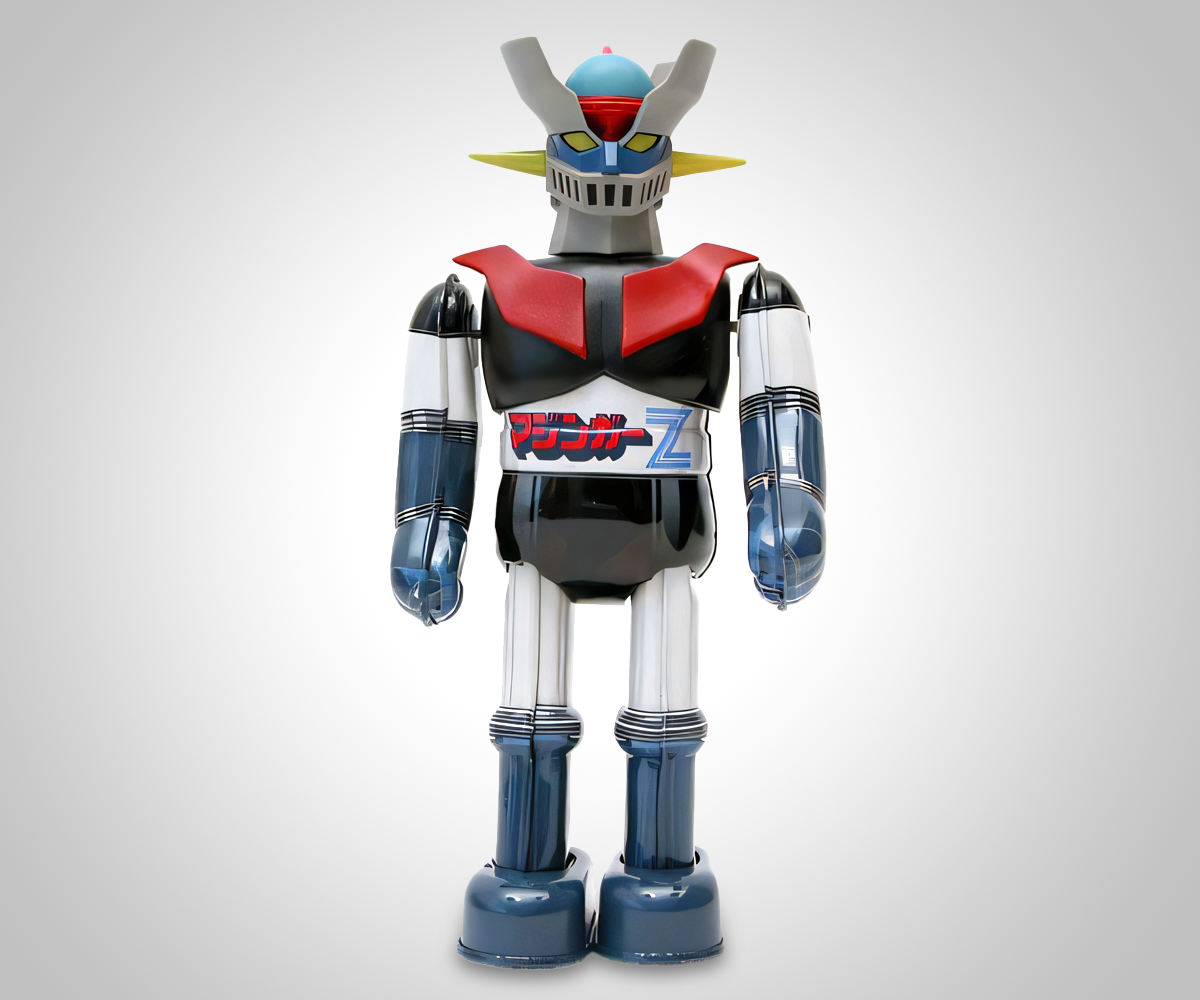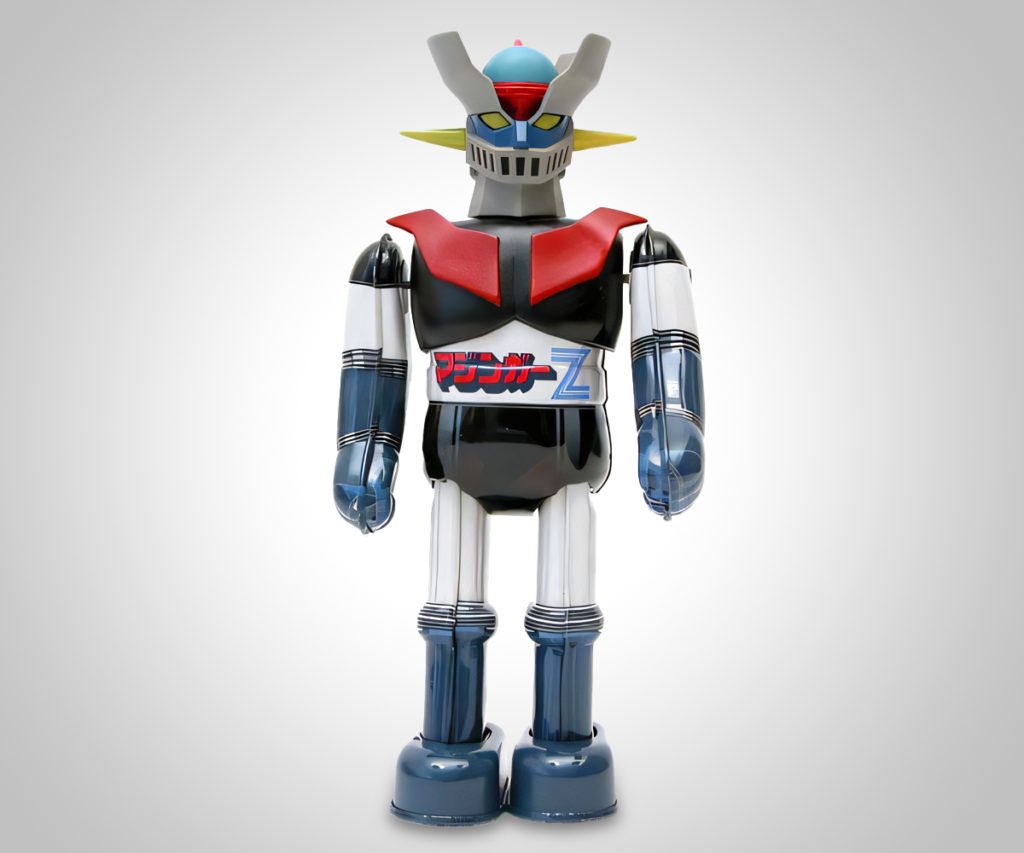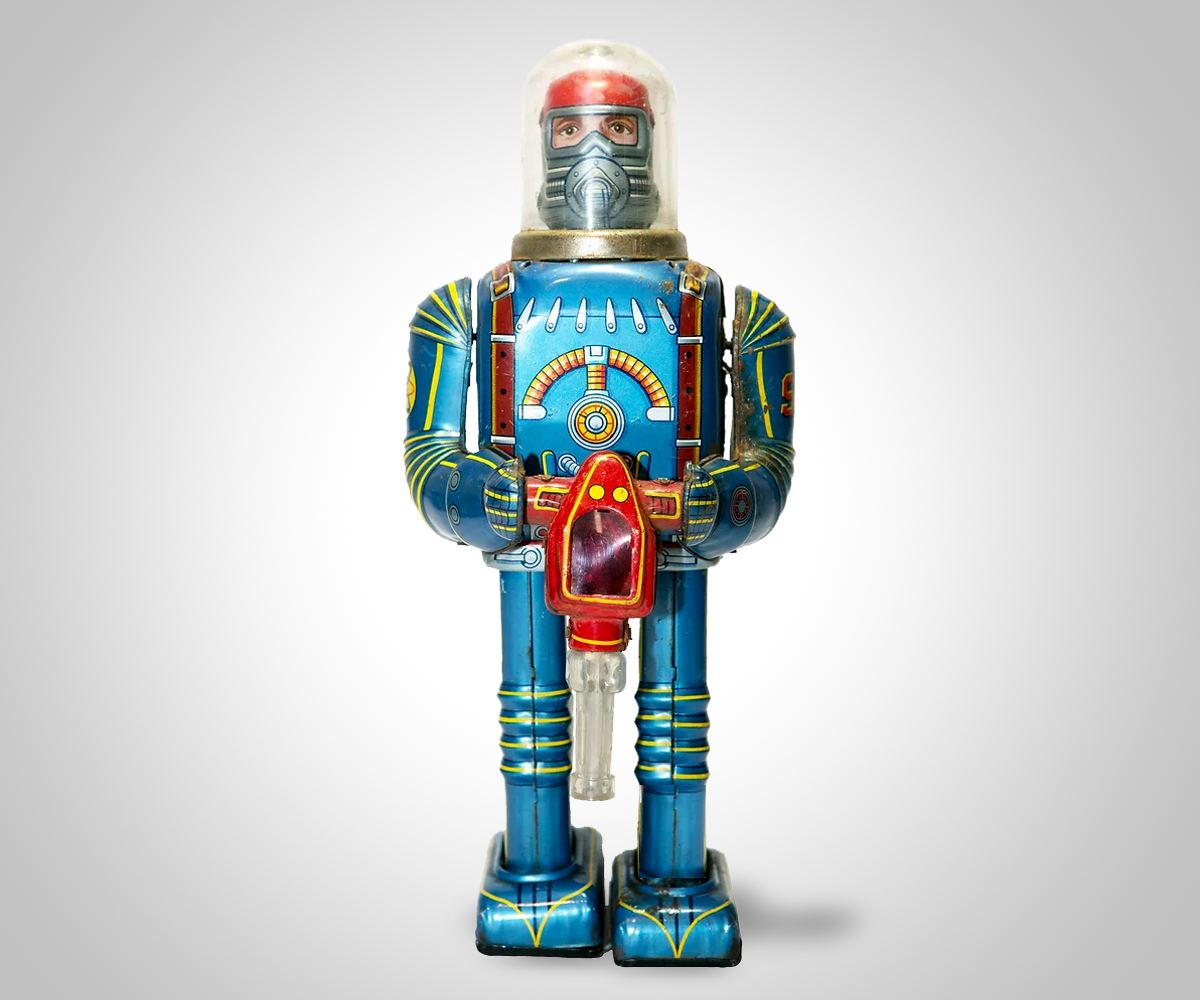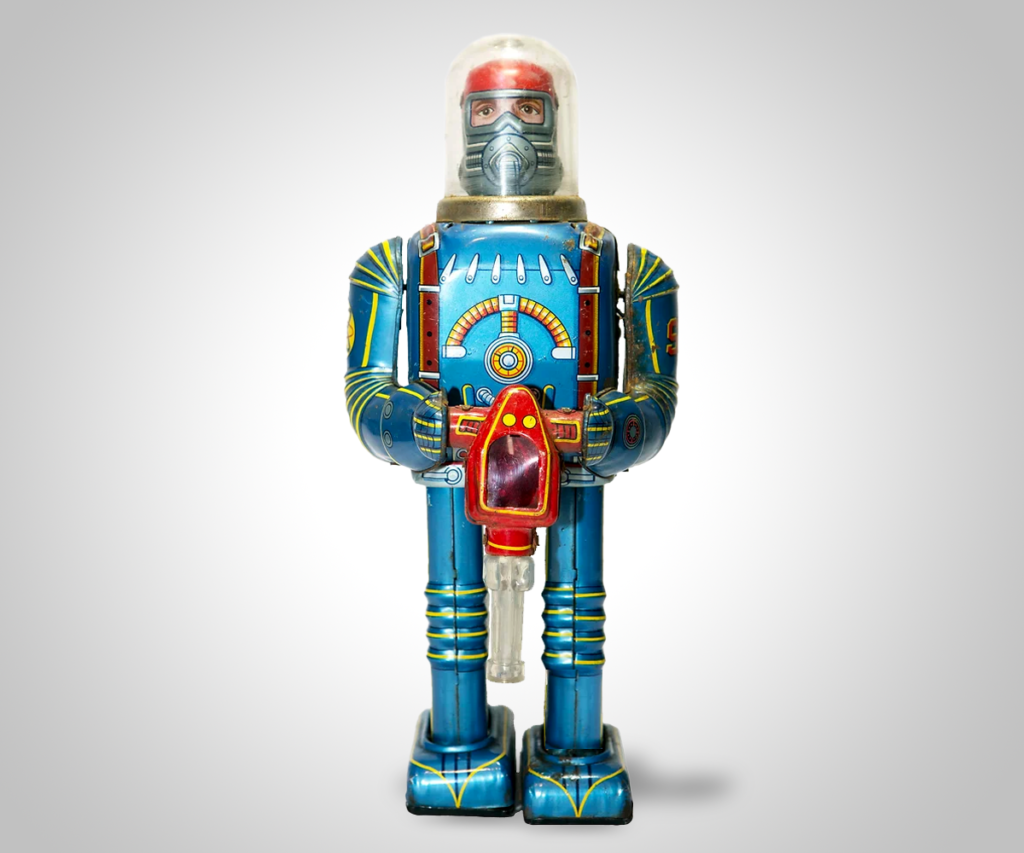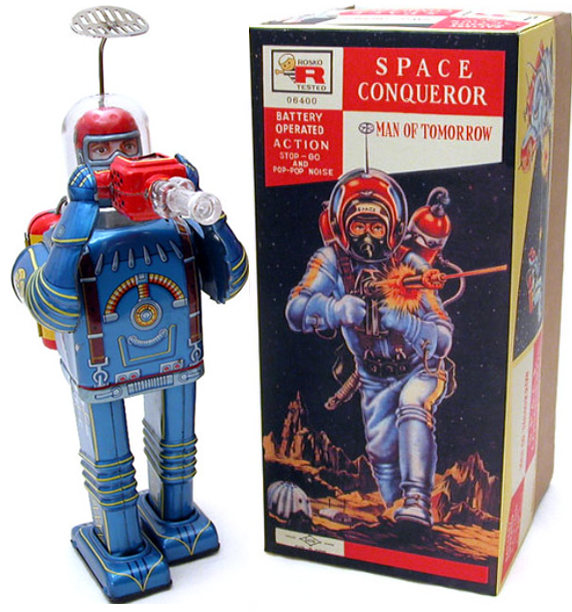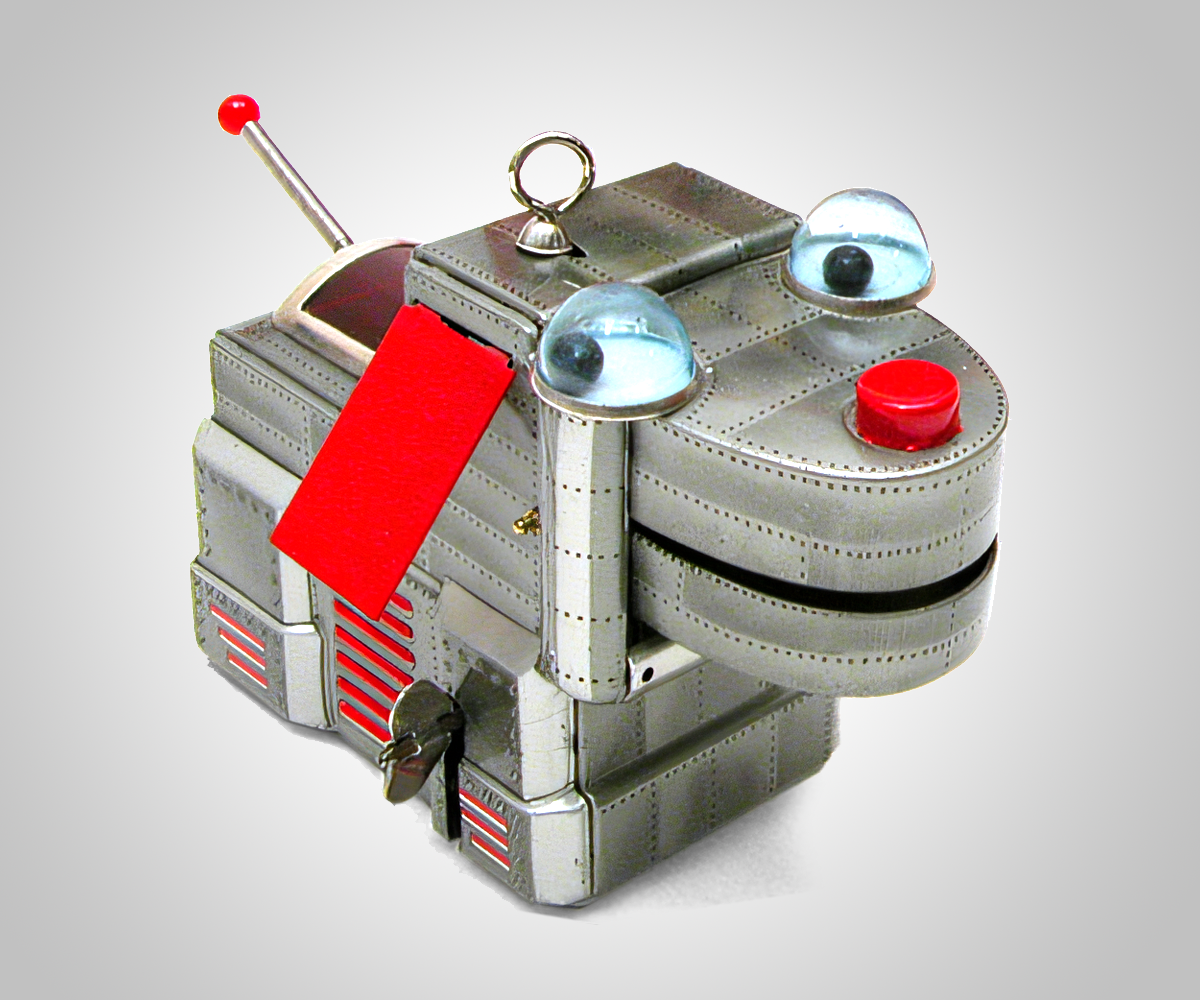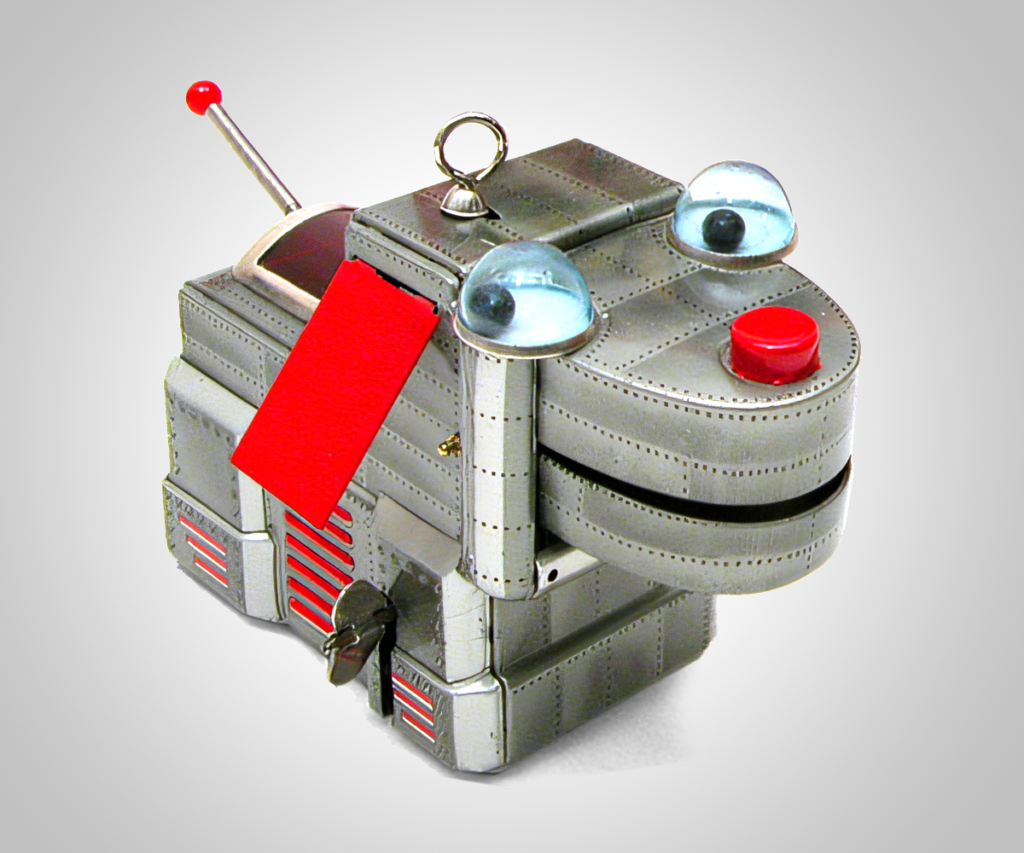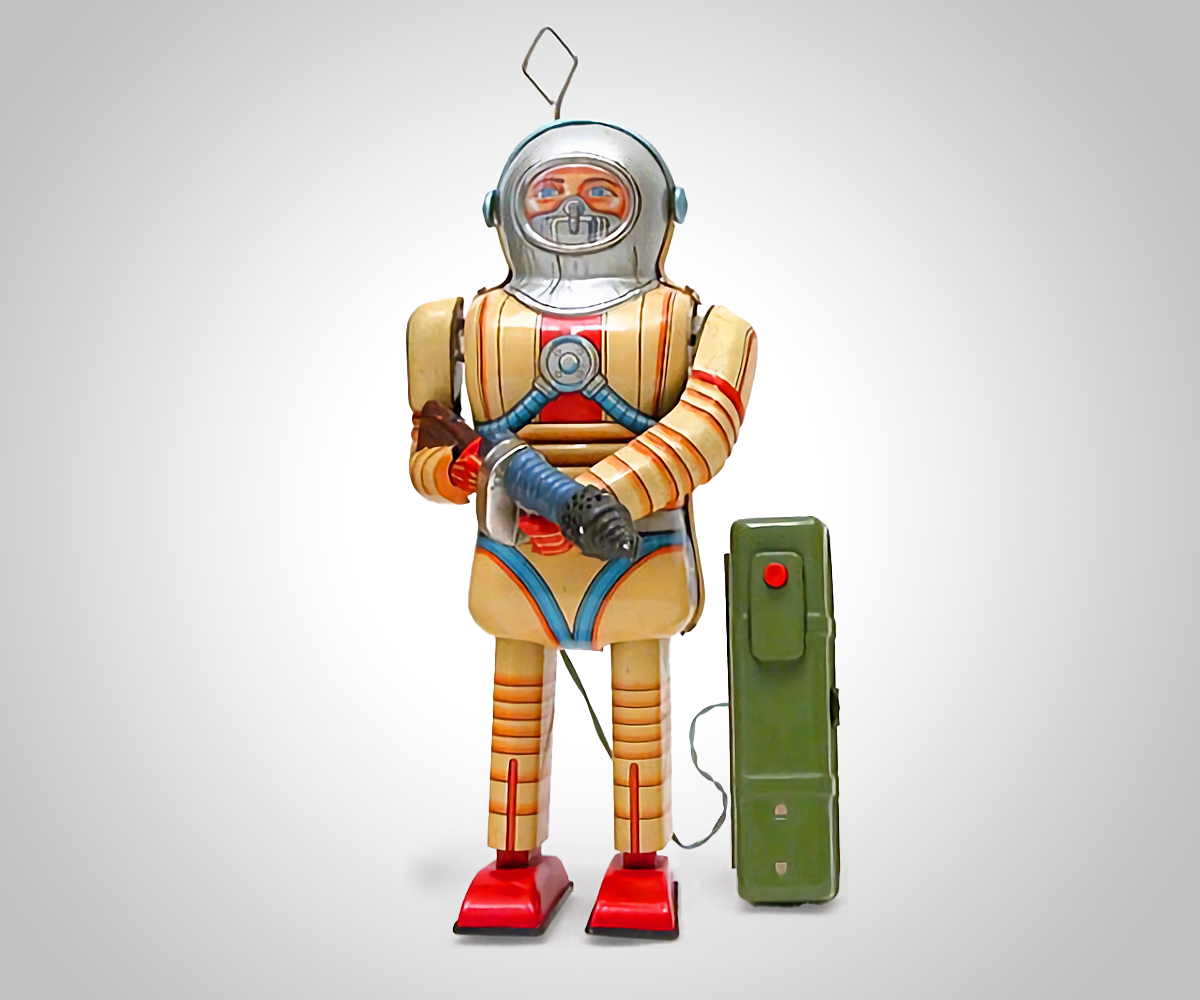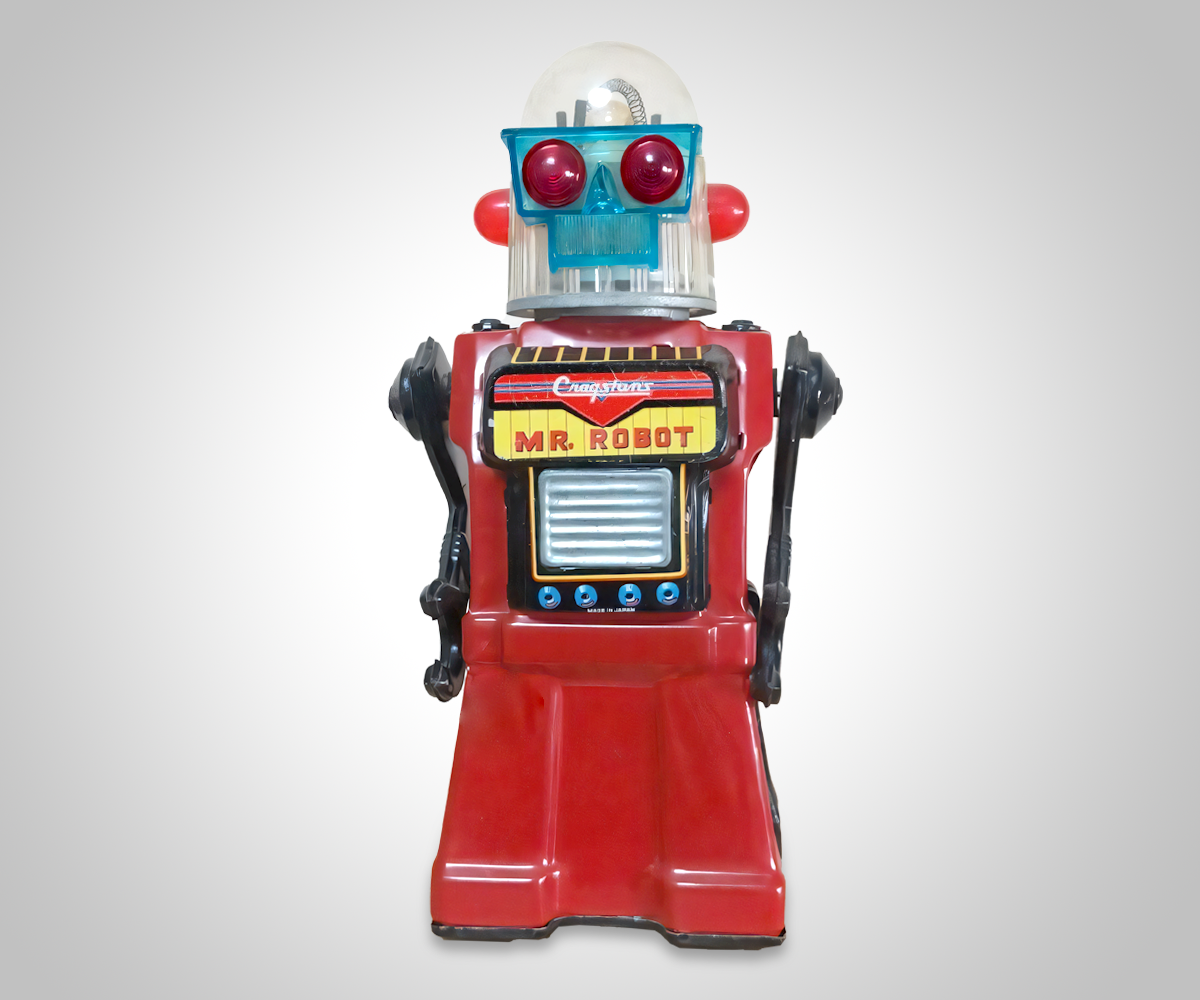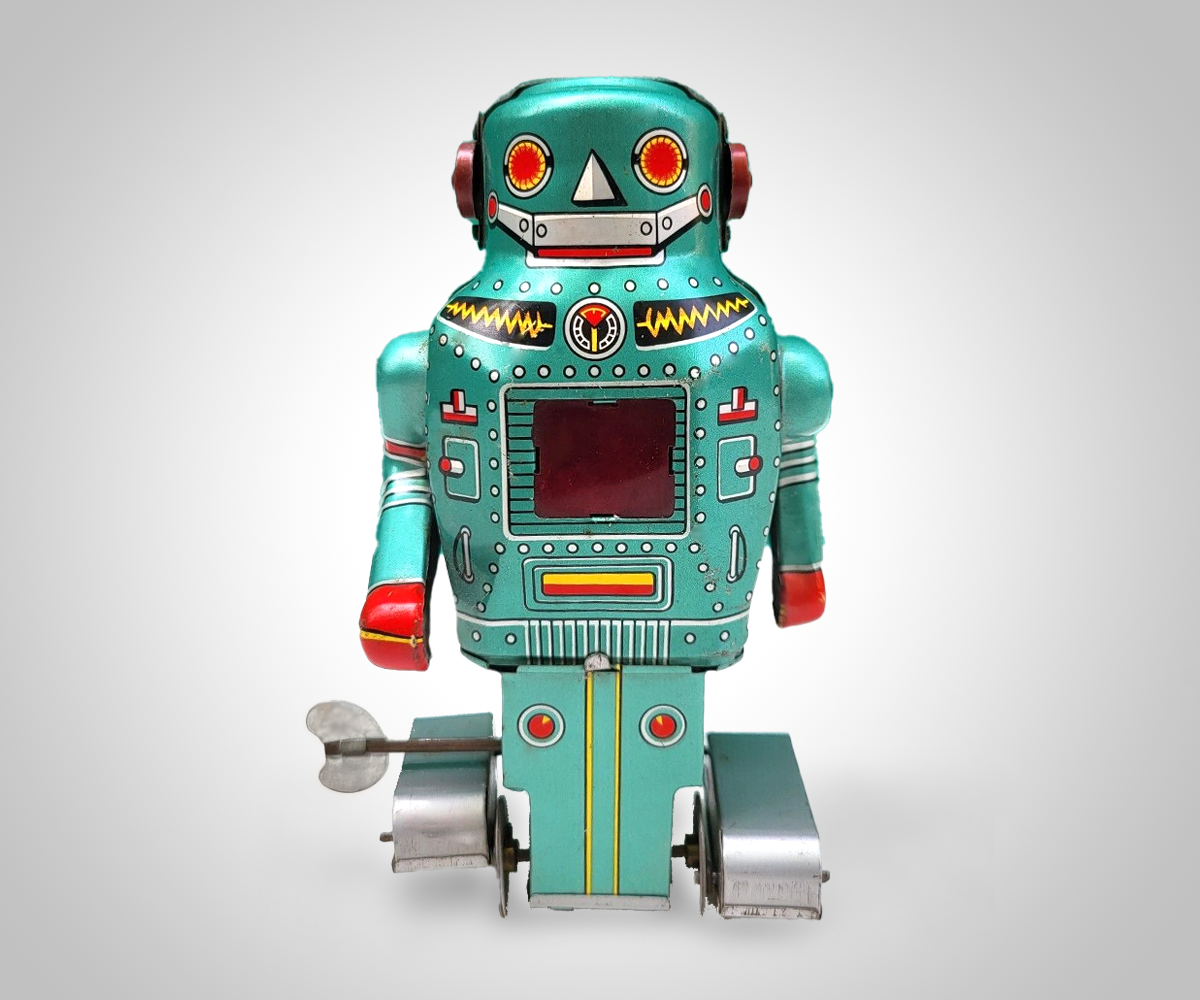In the colorful landscape of vintage robot toys, the Yoshiya (KO) Space Dog, which debuted in 1957, stands out as the first tin robot pet. Reflecting the era’s fascination with space exploration and technology, this robotic canine was a testament to the imaginative reach of toy manufacturers. Produced in silver, red, and a rare orange female dog version, It was motorized in various ways over the years, including friction, wind-up, battery-powered, and remote-controlled versions.
In 1999, Schylling rekindled the nostalgia by reproducing this iconic toy, offering collectors and fans alike the chance to relive the wonder of the original design at an affordable price. Chromo the Space Dog and Rover the Space Dog, part of Schylling’s Collector Series, paid homage to Yoshiya’s original. With its distinctive forward movement, rocking side-to-side motion, and endearing googly eyes that follow its path, the Space Dog remains a beloved relic of mid-century toy innovation.







